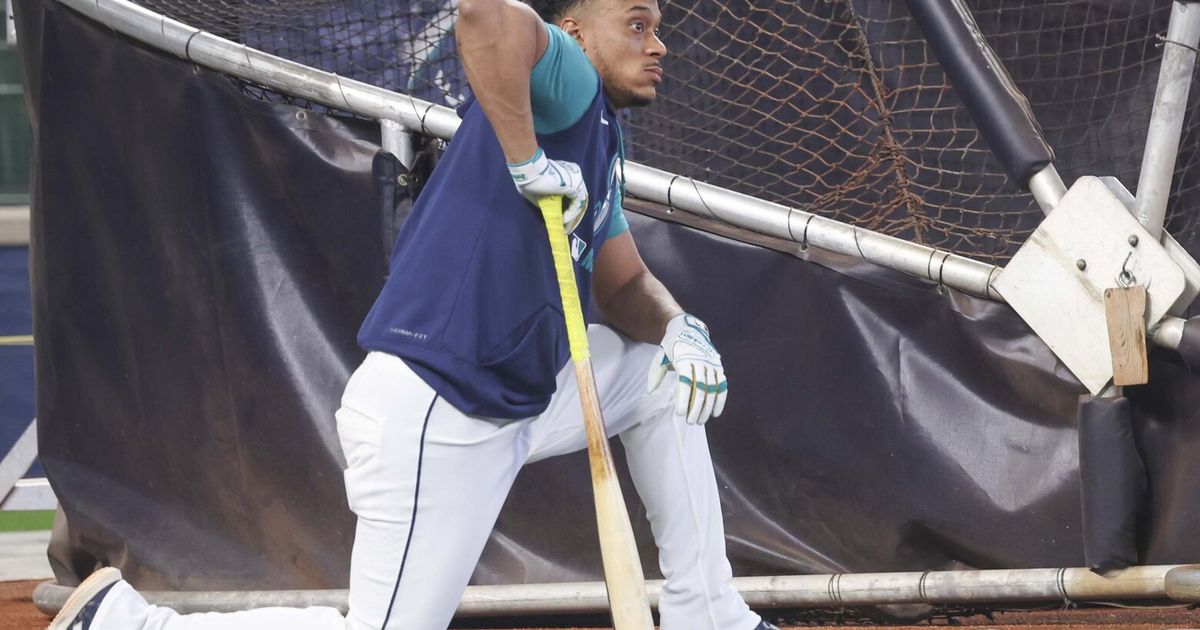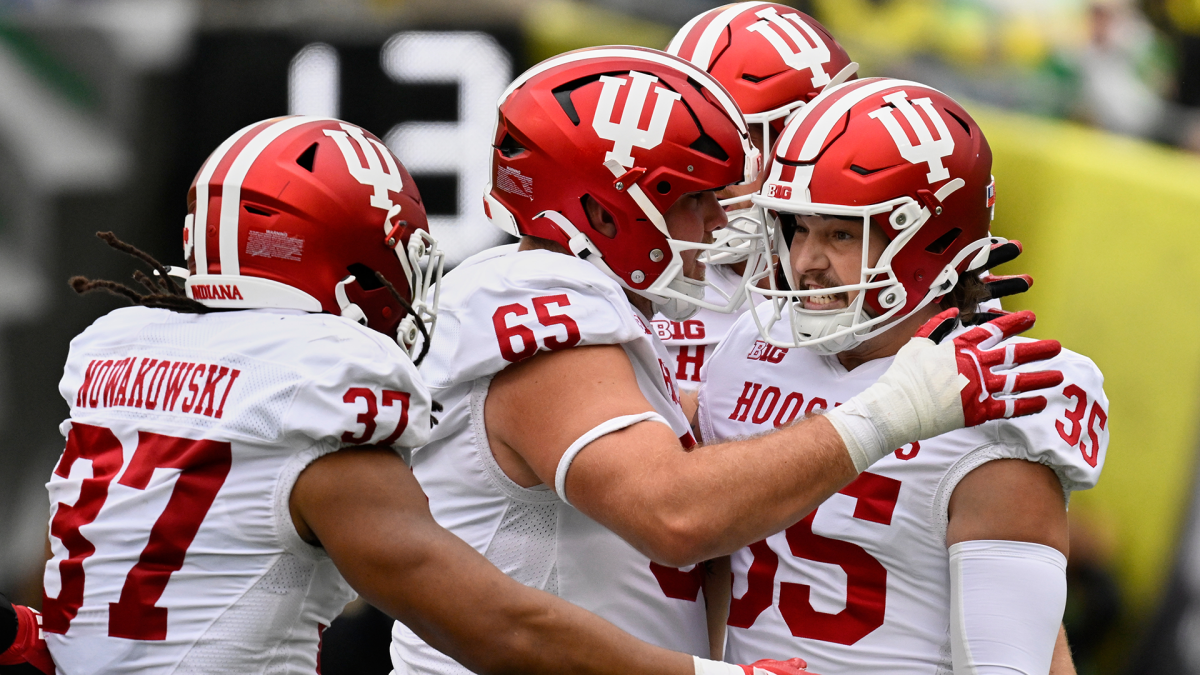A French Open in October, 2020’s Covid era of tennis, and the birth of a Grand Slam champion

Sofia Kenin didn’t know what to expect from her fourth-round match against Fiona Ferro at the 2020 French Open. Playing a French player at Roland Garros is usually one of the more unpleasant tasks in tennis, given how rowdy the crowd can get when rooting for one of their own on Court Philippe-Chatrier.She didn’t have much to worry about, bar 1,000 fans who tried to unsettle her but ultimately could not, with 14,000 empty seats for company.“I wish it would have been crazy, but no, that was unfortunately a ghost town,” Kenin said during an interview earlier this year.Indeed, it was.Five years ago, the tournament ended as it had begun, in the depths of the Covid-19 pandemic, with one of history’s strangest Grand Slam tournaments having taken place over two weeks in which infection rates in Paris and across France were rising fast. The finals, which usually herald the start of summer, took place on the second weekend of October, after France’s tennis federation, the FFT, moved the tournament from spring to fall without consulting anyone else in the sport.Guy Forget, the tournament director that year, did not respond to messages seeking his recollections of the event.“It felt very not-Slam,” Iga Świątek, who that fortnight won her first of six Grand Slam titles and four French Opens to date, wrote in an email from Wuhan, China. Świątek said that the first word that pops into her mind when she thinks of that year at Roland Garros is “silent.”“I remember how I was finding my game throughout the tournament with a lot of ease and fun, being in a bit of a bubble,” she said. “And of course I remember this once-in-a-lifetime moment and emotions when I won the first Slam.”Watching footage of her tennis then, especially her 6-1, 6-2 dismantling of top seed Simona Halep in round four, the ease and fun are impossible to miss. The footwork, patient point construction and painterly variety that launched her career are all there, and she is seeking it again now in its next stage.Everything else to do with that tournament is stranger.The FFT announced the date change March 17, just days after Europe had largely shut down and a little more than two months before play in Paris was scheduled to start. The organization was in a bureaucratic bind, and had to find a way to hold what should have been the second major of 2020 or risk financial peril.Roland Garros had cancelation insurance, but the policy did not cover losses incurred from a health crisis. Wimbledon’s did, and the All England Club received a large payout after it decided to cancel its 2020 edition in April of that year. The French Open had to reschedule, and organizers opted for the fall, when it and the world hoped to have moved beyond what was happening.That never happened — and almost nothing at the tournament went as planned, except maybe the ultimate results, in retrospect. Świątek beat Kenin in the women’s final, romping to victory with 14 consecutive sets across her seven matches, and Rafael Nadal won his 13th French Open and his 20th Grand Slam title, by battering Novak Djokovic 6-0, 6-2, 7-5 under the new roof and floodlights on Court Philippe-Chatrier.The rest of the event unfolded under a shifting mishmash of restrictions, always in danger of suddenly being called off in the event of a rapid outbreak of the virus.Players shared a hotel with French tourists. They were not allowed to stay in private homes — annoying for sometime Paris resident Serena Williams — but could eat out at Paris restaurants. They were only permitted onto the Roland Garros grounds on their match days, practicing across the street on the others. And they, of course, had to take a Covid-19 test every five days, knowing they were one swab away from confinement and the end of their tournament.Some handled all this better than others.Benoît Paire, the French player, tested positive at the U.S. Open in New York at the end of August and had to quarantine for 14 days before flying back to Europe. He then traveled to Rome for the Italian Open, which had been moved to September to precede the French Open as it would in a regular season, and lost in the first round. Then he went to the Hamburg Open, where he tested positive because remnants of the disease were still in his system, but was allowed to play as he was no longer contagious. He retired in the second set of his opening match against Casper Ruud.“I can’t take it anymore, I’m breaking,” he said.Federico Coria of Argentina duly upset Paire, the No. 23 seed, in the second round at Roland Garros.Świątek said from Wuhan that she and Daria Abramowicz, her psychologist, had worked to prepare for oddball circumstances, “to deal with sounds and even different visual experiences.”“I felt ready and I was really in my zone during this tournament. On one hand, it was a little bit easier because of no interactions but on the other hand, I could hear my breath, sounds the opponent made,” Świątek added.As it turned out, the French Open concluded just in time to avoid sporting disaster, but it began just as infection rates in Paris and beyond exploded. Shortly ahead of the event, French officials had already confirmed 30,000 deaths from Covid-19.When the main draw began on Sept. 27, France was recording about 10,000 new cases each day. On Oct. 10, the weekend of the singles finals, the country set a Europe-wide high for new infections in a 24-hour period, with 28,896 recorded and likely many more unrecorded.By the end of the month, France was recording some 40,000 new cases each day, and entered a second nationwide lockdown on Oct. 28. French epidemiologists estimated that roughly 5 percent of the population, or about 2.8 million people, were infected.None of this was Świątek’s, Nadal’s, or any other player’s fault. “Of course, is an important day for me, but I’m not stupid, no? Is still a very sad situation worldwide,” Nadal said in his news conference after winning the title. But like so many sporting events of that year, the decision to bring in a collection of athletes from across the globe carried risks.French authorities knew that. Originally, the FFT and the government had worked out a plan to allow about 11,500 spectators onto the grounds each day. The idea was to divide them into three separate zones, to avoid overcrowding and allow for social distancing.After the U.S. Open took place without spectators, Naomi Osaka and Dominic Thiem winning titles in an eerie vacuum of tension, holding a Grand Slam tournament in front of even a few thousand fans felt like a revelation. But with infection rates rising, authorities scrapped that plan and allowed just 1,000 spectators into Roland Garros per day.“You had this whole setup for all these people and then no one was there,” said Ken Solomon, former chief executive of the Tennis Channel.Players had to adjust in other ways.The usual late spring / early summer version of the French Open brings some cloudy, heavy days but mostly bright sunshine and warm-to-hot temperatures. Balls jump and kick off the clay in the heat of the Paris sun. Playing there in October, Nadal, Świątek and their foes had to reckon with brisk winds, gray skies and plummeting thermometers. They did not just have to dress for the weather; they had to reconfigure their games and their expectations.Nadal believes clay-court tennis at night is something like a sin against the sport, but 2020 was the first year in which Court Philippe-Chatrier held a session that went past darkness. The three other main courts, Suzanne-Lenglen, Simonne-Mathieu and Court 14, also had floodlights for the first time.“Conditions here probably are the most difficult conditions for me ever in Roland Garros for so many different facts,” Nadal said in his news conference ahead of the tournament. Djokovic had declared him beatable. By the time that second Sunday came, it mattered little.“One player came out in a ski jacket, like a full-on puffer,” said Brett Haber, who called matches for Tennis Channel as part of a team that included Jim Courier, Ted Robinson, Steve Weissman, Mark Knowles and Jon Wertheim. “There were just so many visual anomalies.”In the chill of early fall, night tennis had players out on court in leggings and long sleeves and shivering under jackets on changeovers, though Świątek, among others, played some of her day matches in leggings too, including the final against Kenin.Some other stars, present and future, had their moments.A largely unknown Italian teenager named Jannik Sinner upset David Goffin in the first round, and it wasn’t even close. Sinner beat the No. 11 seed 7-5, 6-0, 6-3, ultimately rolling into the quarterfinals, though he may have had the Covid-19 version of a good draw: Goffin tested positive within days of their match. Sinner then beat Alexander Zverev in the fourth round, who said he was “completely sick” in his news conference afterward. “I can’t really breathe, as you can hear by my voice. I had fever, you know, as well. I’m not in the best physical state.”Zverev was up to date on his Covid tests, and players were supposed to report symptoms to tournament officials.Sebastian Korda of the U.S. had only played three tour-level matches before Roland Garros, where he ended up facing Nadal in the round of 16. Then 20, Korda won three matches in qualifying before winning three more, including a second-round upset of big-serving compatriot John Isner, to set up the showdown with his childhood idol.Other than the champions, Korda may have the warmest memories of that strange competition.“For sure, the best clay-court experience I’ve ever had in my life,” he said during an interview at Roland Garros earlier this year. “Playing the greatest of all time, on a clay court — as a young kid, my dream was to play Rafael Nadal at the French Open. He was my favorite tennis player growing up and I was pretty lucky to get it early in my career.”Predictably, Korda took a licking. Nadal beat him 6-1, 6-1, 6-2. And yet, it’s somehow morphed into a good memory filled with gratitude for the opportunity.“It was for sure different,” Korda said. “It was a tough period of time, but it was also a nice time to play tennis. It was cool, just one-on-one, there’s nothing else really out there. The stadium isn’t filled. It was a different kind of tennis.”Świątek said she spent most of the time when she wasn’t on the court hunkered down in her room, listening to music and reading.Twenty months later, she would get to win a proper French Open, in front of a packed Court Philippe-Chatrier, a far different experience in terms of the intensity and the emotional energy, which Świątek described as “the incredible feelings that fans bring us on the court.”“The celebration is completely different,” she said. “Of course, on the other hand, it adds to the pressure.”












